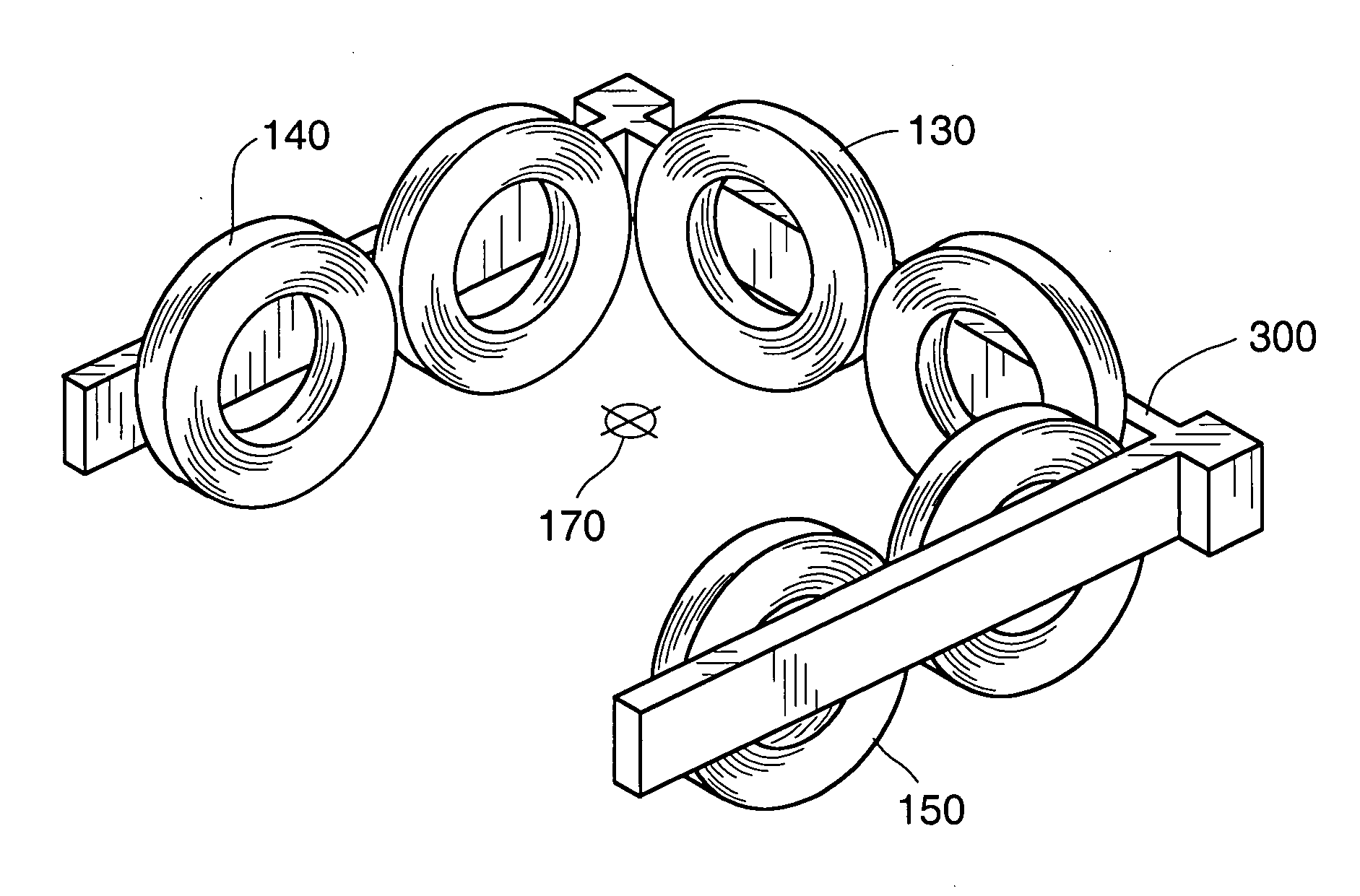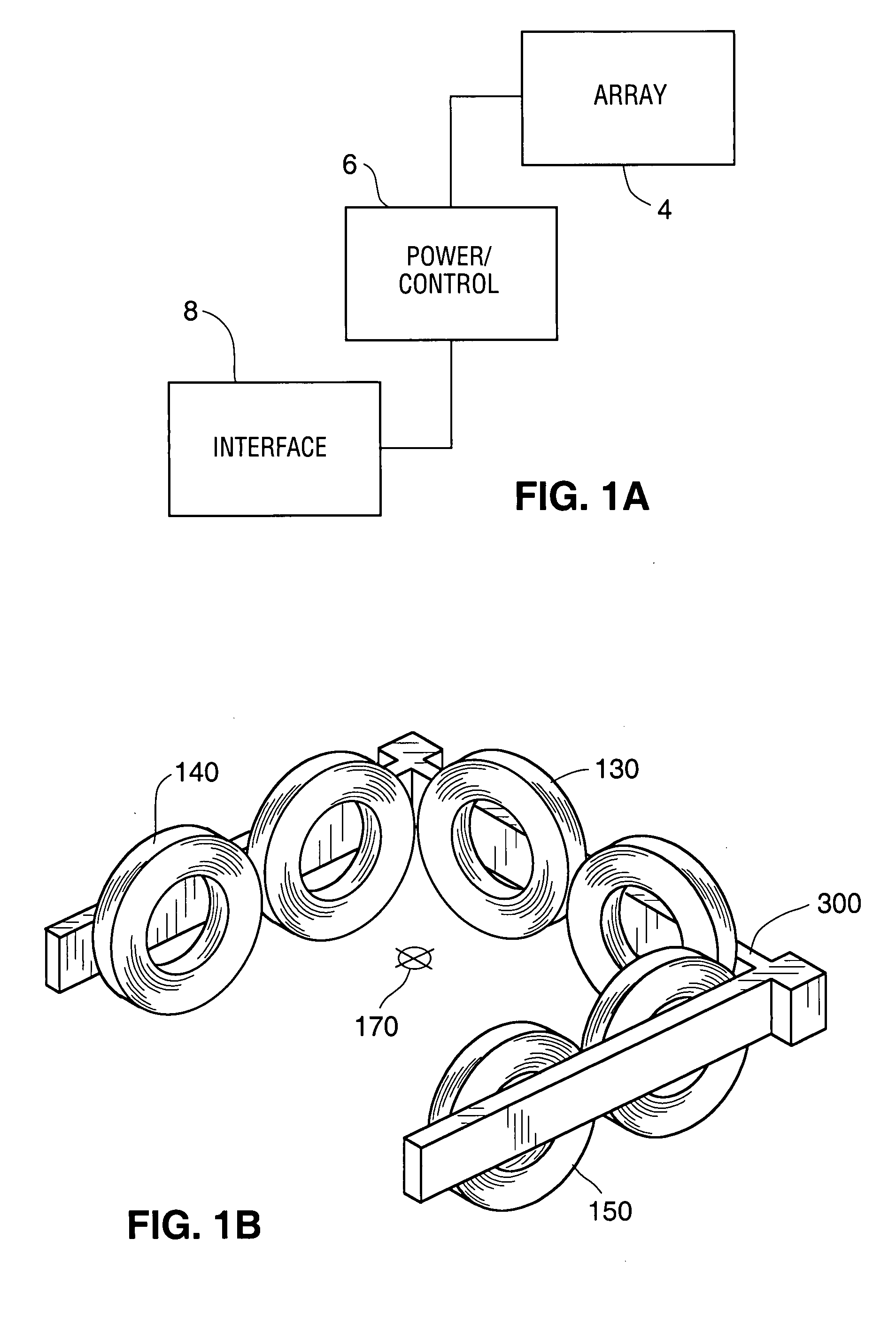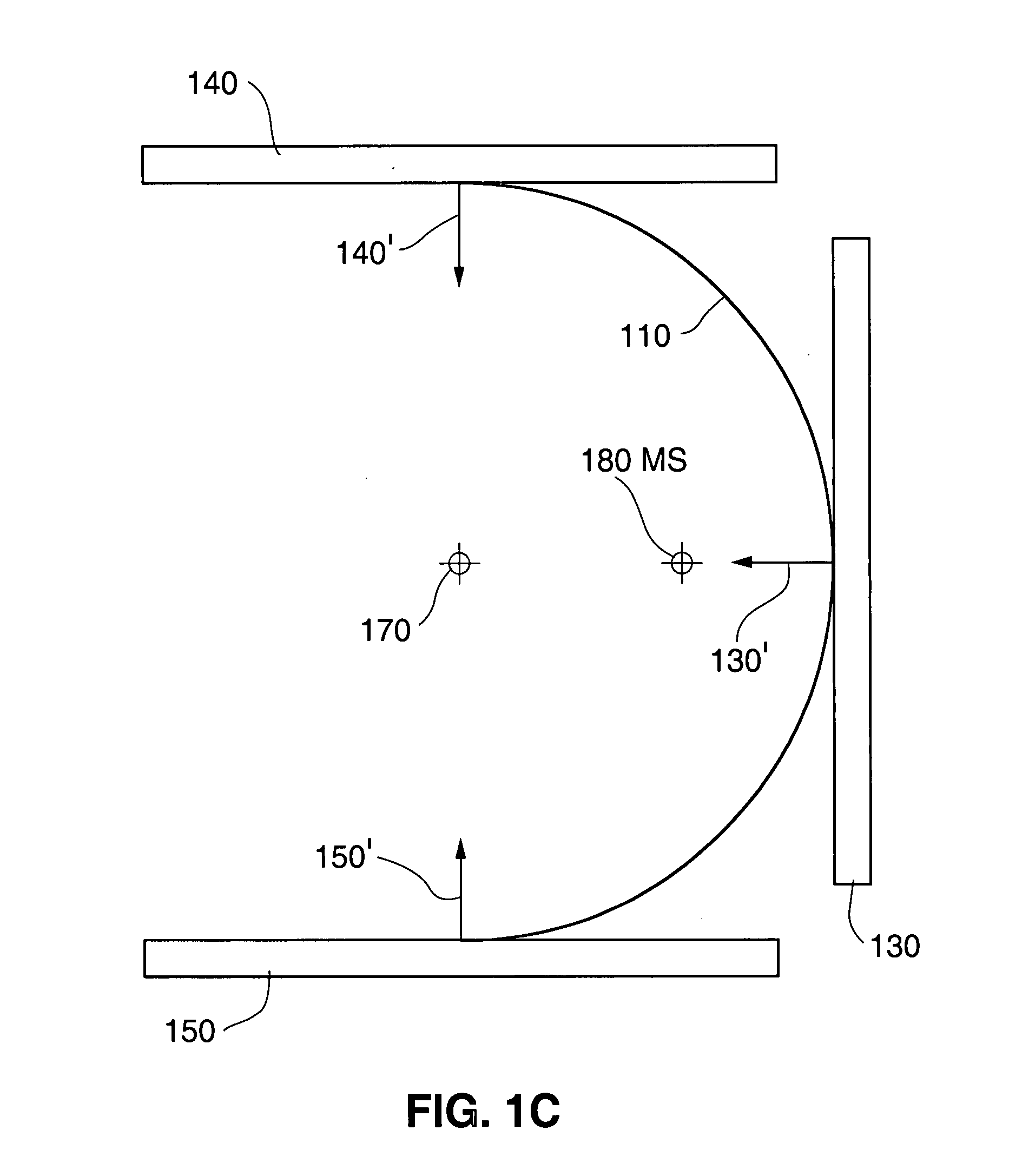Trajectory-based deep-brain stereotactic transcranial magnetic stimulation
a transcranial magnetic stimulation and trajectory-based technology, applied in the field of system for stereotactic transcranial magnetic stimulation of the brain, can solve the problems of preventing the effect of simply increasing the output of the electromagnet, limiting the rtms technique to the stimulation of only superficial structures, and limiting the tms and rtms instruments
- Summary
- Abstract
- Description
- Claims
- Application Information
AI Technical Summary
Benefits of technology
Problems solved by technology
Method used
Image
Examples
Embodiment Construction
[0051] The present application describes a system and method for stereotactic transcranial magnetic stimulation or modulation (“sTMS”). The disclosed system and method uses an array of coils arranged in a predetermined configuration and pulsed substantially simultaneously so that at select spatial vectors, the magnetic field strength at a deep target exceeds that on the surface, close to the coils.
[0052] The disclosed method derives its effect, in part, by recognizing that in addition to considering total magnetic field strength at a given location, consideration of the strength and direction of individual X, Y, and Z magnetic vectors from an array of coils allows an arrangement of the coils to be selected such that the magnetic fields of the magnets will combine in a manner that intensifies some areas of the overall magnetic field and weakens others. In the appropriate configuration, the magnetic field along a given axis (say, for the purposes of one example, the Z-Axis defined as...
PUM
 Login to View More
Login to View More Abstract
Description
Claims
Application Information
 Login to View More
Login to View More - R&D
- Intellectual Property
- Life Sciences
- Materials
- Tech Scout
- Unparalleled Data Quality
- Higher Quality Content
- 60% Fewer Hallucinations
Browse by: Latest US Patents, China's latest patents, Technical Efficacy Thesaurus, Application Domain, Technology Topic, Popular Technical Reports.
© 2025 PatSnap. All rights reserved.Legal|Privacy policy|Modern Slavery Act Transparency Statement|Sitemap|About US| Contact US: help@patsnap.com



